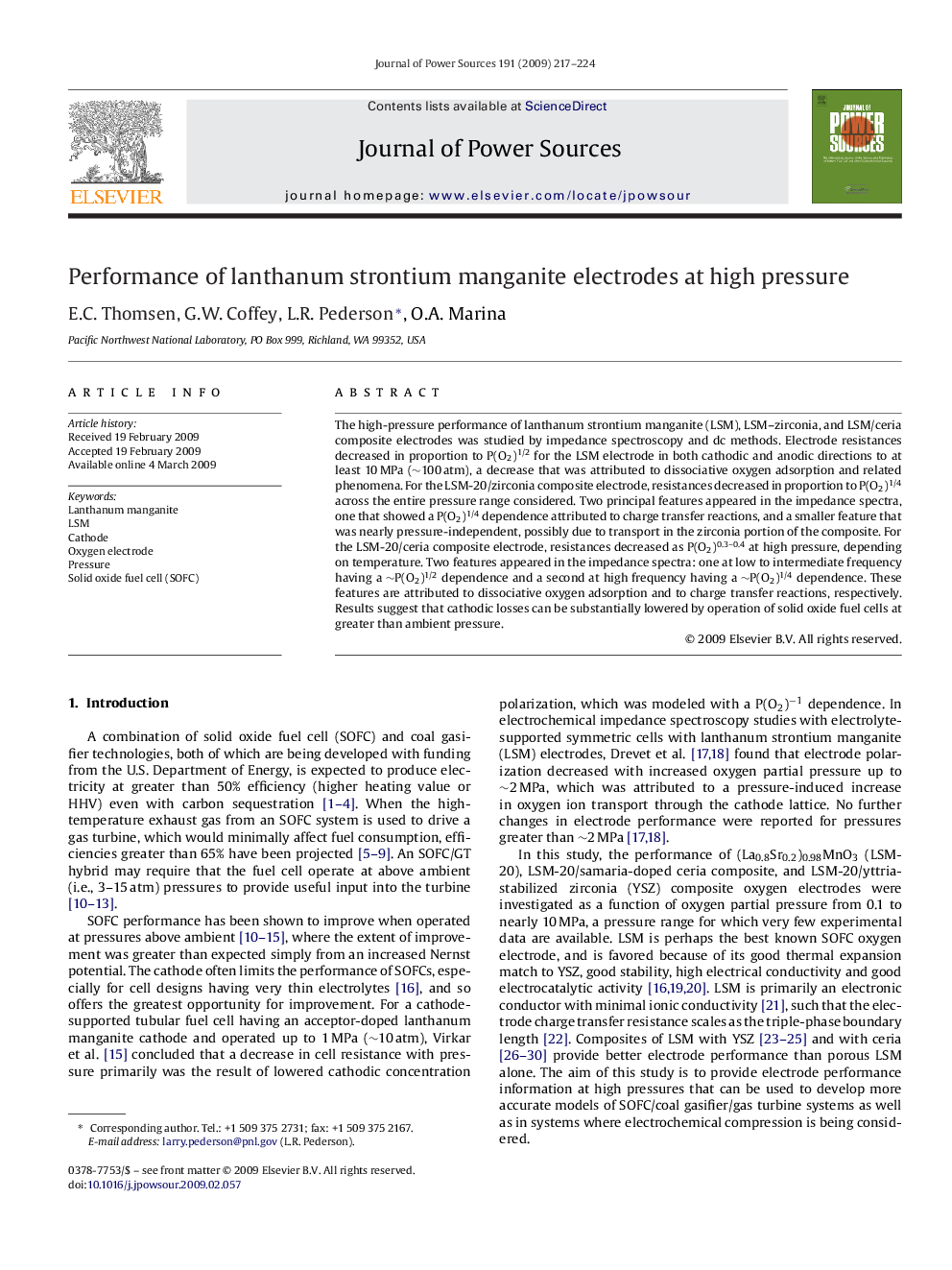| Article ID | Journal | Published Year | Pages | File Type |
|---|---|---|---|---|
| 1289707 | Journal of Power Sources | 2009 | 8 Pages |
The high-pressure performance of lanthanum strontium manganite (LSM), LSM–zirconia, and LSM/ceria composite electrodes was studied by impedance spectroscopy and dc methods. Electrode resistances decreased in proportion to P(O2)1/2 for the LSM electrode in both cathodic and anodic directions to at least 10 MPa (∼100 atm), a decrease that was attributed to dissociative oxygen adsorption and related phenomena. For the LSM-20/zirconia composite electrode, resistances decreased in proportion to P(O2)1/4 across the entire pressure range considered. Two principal features appeared in the impedance spectra, one that showed a P(O2)1/4 dependence attributed to charge transfer reactions, and a smaller feature that was nearly pressure-independent, possibly due to transport in the zirconia portion of the composite. For the LSM-20/ceria composite electrode, resistances decreased as P(O2)0.3–0.4 at high pressure, depending on temperature. Two features appeared in the impedance spectra: one at low to intermediate frequency having a ∼P(O2)1/2 dependence and a second at high frequency having a ∼P(O2)1/4 dependence. These features are attributed to dissociative oxygen adsorption and to charge transfer reactions, respectively. Results suggest that cathodic losses can be substantially lowered by operation of solid oxide fuel cells at greater than ambient pressure.
